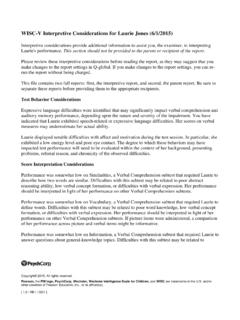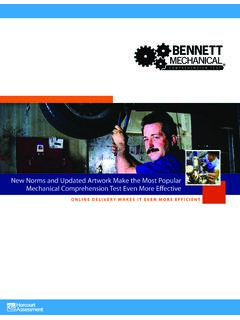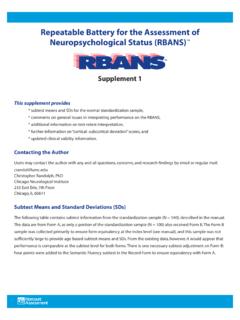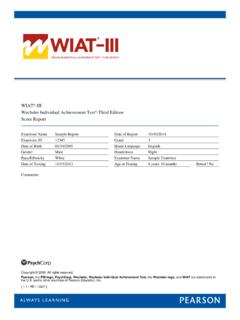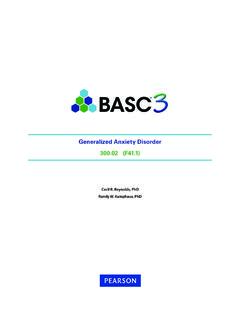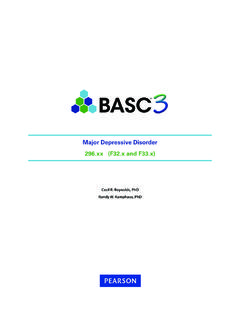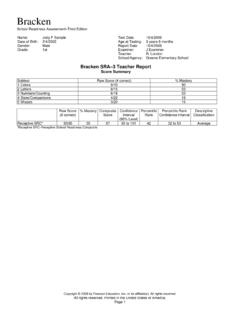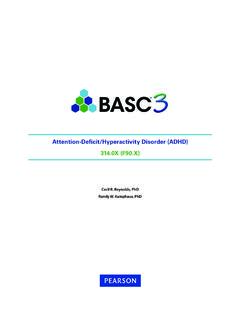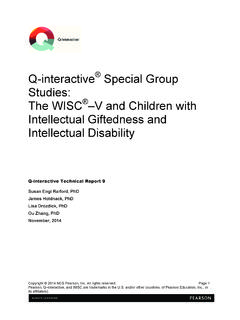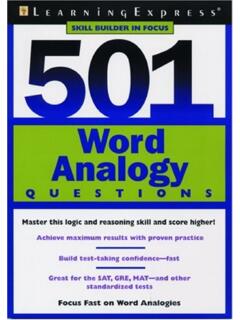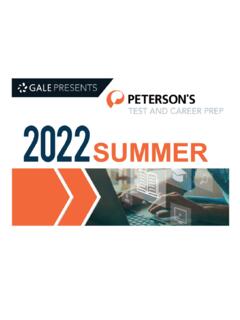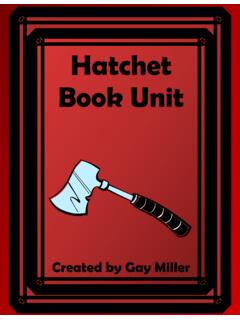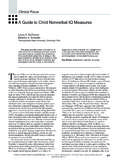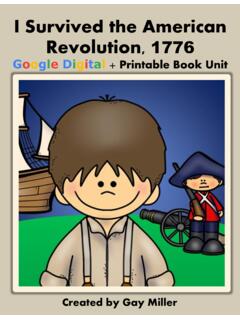Transcription of Preschool Language Scales-5: Assessing Language from 0-7
1 Copyright 2007 Pearson Education, inc. or its affiliates. All rights Language Scales-5: Assessing Language from 0-7 Nancy Castilleja, MA CCC-SLPP earson AssessmentCopyright 2007 Pearson Education, inc. or its affiliates. All rights Objectives identify three key differences between PLS-4 and PLS-5 describe two research studies conducted with the PLS-5 describe at least two principles identified by ASHA as best practices in early Language assessmentCopyright 2007 Pearson Education, inc. or its affiliates. All rights s t P u r p o s e : Identify young children (ages birth to 7:11) who have a Language delay or disorderCopyright 2007 Pearson Education, inc.
2 Or its affiliates. All rights in PLS-5 Current norms for a wider age range: based on the 2008 update of the Census for children birth through 7:11 Streamlined administration, with new suggested start points and test items that involve manipulatives grouped for smoother transitions during testing Improved test items, based on clinician and field testers feedback New Growth Scale Values! Evidence-based scores you can use to track progress Updated Articulation Screener with picture stimuliCopyright 2007 Pearson Education, inc. or its affiliates. All rights skills does PLS-5 target?Assess a wide range of communication skills Preverbal skills Attention to environment and people Play Vocal development Social communication Gesture Language content and structure understanding and using concepts Understanding and using morphosyntactic forms Integrative Language skills (thinking using Language ) analogies Similes Categories Semantic absurdities Theory of Mind Emergent literacy Book handling Phonological awareness Letter identificationCopyright 2007 Pearson Education, inc.
3 Or its affiliates. All rights Range and Administration Time Age range: Now birth through 7:11 Use normed scores for children through age 7 Use as a criterion-referenced tool for older elementary age children functioning at the birth to 7:11 age range Not appropriate for use with secondary students or adults functioning at a Language age of birth through 7:11 Administration time: Birth through 11 months: 25-35 minutes 12 through 35 months: 45-55 minutes 3:0 through 4:11: 50-60 minutes 5:0 through 7:11 40-50 minutes New start points reduce administration timeCopyright 2007 Pearson Education, inc. or its affiliates. All rights s t K i t a n d M a n i p u l a t i v e sCopyright 2007 Pearson Education, inc.
4 Or its affiliates. All rights of the TestNorm-referenced Scales Auditory Comprehension Scale Expressive Communication ScaleSupplemental Measures Language Sample Checklist Articulation Screener Home Communication QuestionnaireCopyright 2007 Pearson Education, inc. or its affiliates. All rights Communication QuestionnaireCopyright 2007 Pearson Education, inc. or its affiliates. All rights Communication QuestionnaireCopyright 2007 Pearson Education, inc. or its affiliates. All rights Auditory Comprehension, Expressive Communication, and Total Communication Standard scores Percentile ranks Growth Scale Values (formerly called Progress Scores on the PLS-4 Measure of Progress) Age equivalents Articulation Screener Research-based criterion scores by ageCopyright 2007 Pearson Education, inc.
5 Or its affiliates. All rights different is PLS-5 from PLS-4?Approximately 25% of the test items are new to PLS-5 25% are unchanged 50% have been modified in some way, with new art, new administration directions, or new practice itemsCopyright 2007 Pearson Education, inc. or its affiliates. All rights Test Items For ages 18-24 months additional items Assessing play For ages 3 through 4 years new items Assessing book handling and concept of print For ages 5 through 7 years new items testing Theory of Mind Integrated Language skills such as use of synonyms Emergent literacy skills such as naming letters and understanding prefixesCopyright 2007 Pearson Education, inc.
6 Or its affiliates. All rights item: Uses synonymsCopyright 2007 Pearson Education, inc. or its affiliates. All rights Demonstration Item for Understands Size/Sequence Concepts (smallest, biggest)Copyright 2007 Pearson Education, inc. or its affiliates. All rights Practice item: Uses Possessive Pronouns: hers, hisCopyright 2007 Pearson Education, inc. or its affiliates. All rights Practice Item: Understands noun + two adjectivesCopyright 2007 Pearson Education, inc. or its affiliates. All rights practice item Copyright 2007 Pearson Education, inc. or its affiliates. All rights artCopyright 2007 Pearson Education, inc. or its affiliates. All rights Theory of Mind Theory of Mind Capacity to understand another s mental state to explain and predict others behavior ( miller , 2006) Child learns to take another person s perspective Link between Theory of Mind and communication (de Villiers & de Villiers, 2005) Also important for comprehending narrativesCopyright 2007 Pearson Education, inc.
7 Or its affiliates. All rights integrating Theory of Mind concepts Some items requiring that the child make inferences about another s feelings or intentionsCopyright 2007 Pearson Education, inc. or its affiliates. All rights false beliefsCopyright 2007 Pearson Education, inc. or its affiliates. All rights of streamlined administration of test itemsCopyright 2007 Pearson Education, inc. or its affiliates. All rights 2007 Pearson Education, inc. or its affiliates. All rights Articulation Screener, now with visual stimuli Copyright 2007 Pearson Education, inc. or its affiliates. All rights from PLS-4 to PLS-5 Item Administration and Scoring Changes New!
8 Start points reduce administration time Examinees take fewer test items All test stimuli are in the Record Form Items retained from PLS-4 are similar, but some items have scoring changes Example: Naming Categories item: as long as the child names at least six items in the category, he or she may name one or two items that are not in the category Specifics will be posted on in late SpringCopyright 2007 Pearson Education, inc. or its affiliates. All rights Copyright 2007 Pearson Education, inc. or its affiliates. All rights Basal: 3 consecutive correct responses Ceiling: 6 consecutive errors Based on performance of children in the standardization sample Because PLS-5 tests a variety of skills, a child could obtain one or more score points if you discontinue testing earlierCopyright 2007 Pearson Education, inc.
9 Or its affiliates. All rights Research Over 1800 children were tested for standardization and related reliability and validity studies from December 2009 through August 2010 The standardization sample was collected by 189 clinicians in 42 states in the United StatesCopyright 2007 Pearson Education, inc. or its affiliates. All rights c h n i c a l I n f o r m a t i o n Demographic Information Validity Studies Clinical studies Ages 1-2:11 Language delay study Ages 3:0-7:11 Language disorder study Sensitivity/specificity Positive/negative predictive power Correlations with other assessments PLS-4 CELF Preschool -2 Reliability Studies Inter-rater reliability.
10 95 to .98 Inter-scorer agreement: .91 to Case studies Autism Hearing ImpairmentCopyright 2007 Pearson Education, inc. or its affiliates. All rights mirrors March 2008 Update of the Census: Race/EthnicityAfrican-American 14%Asian 4%Hispanic 23%White 55%Other 4%Copyright 2007 Pearson Education, inc. or its affiliates. All rights mirrors March 2008 Update of the Census: Parent Education0-11 years 15%High School diploma or GED 26%1-3 years college or technical school 28%4 or more years of college 31%Copyright 2007 Pearson Education, inc. or its affiliates. All rights mirrors March 2008 Update of the Census: RegionPLS-5 Normative Sample: RegionNortheast 24%Copyright 2007 Pearson Education, inc.
